The Bronx is often misconceived as a ghetto, a slang often used to refer to an impoverish area where there is a high concentration of objects looking cheap and dirty. This then creates the preconception that being “ghetto” is what the Bronx is and living within this city is a danger to ones life as crime is the standard to live by in order to survive. This delusion of danger being on the basis of crime and poverty carries over to the people living within the Bronx, misinterpreting their passion for life as criminalistics behavior. While crime is truly an issue that needs to be solved, as it is present in all cities, the term ‘dangerous’ should not only be correlated to crime rates, instead, what makes the Bronx truly dangerous is the culture, norms, and values that is depicted by the residents.
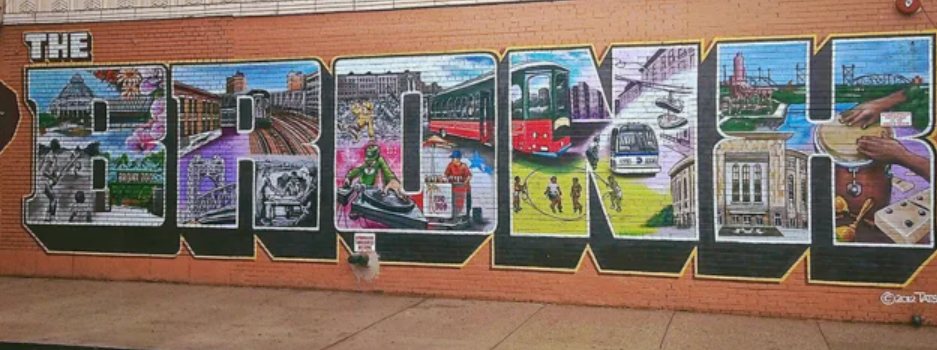
Many places in the Bronx seem hidden in shadows, just as the Bronx itself is in Manhattan’s shadow. And dark stories develop best in dark shadows.
S.J Rozan
Think of the Bronx
When you think of the Bronx, what was the image you pictured? Did you think of a metropolitan city, busy with life and bustling cars? or did you think of streets filled with potholes, the projects, and trash littering the place?
If you thought of the poverty scene, then you are not the one at fault. The Bronx, for years has been televised as an area that little kids are unable to run freely, safely. The news loves to capitalize on negative issues that occurs and the Bronx tends to constantly attract these news outlets as unique events occur within this area. An example of this occurred on January 14, 2021. To end the first month of the year, a man was seen walking around with an assault rifle with a “high capacity magazine attached to it…Though the gun was not fired, police said that it caused fear and alarm to people nearby.” (Davenport).
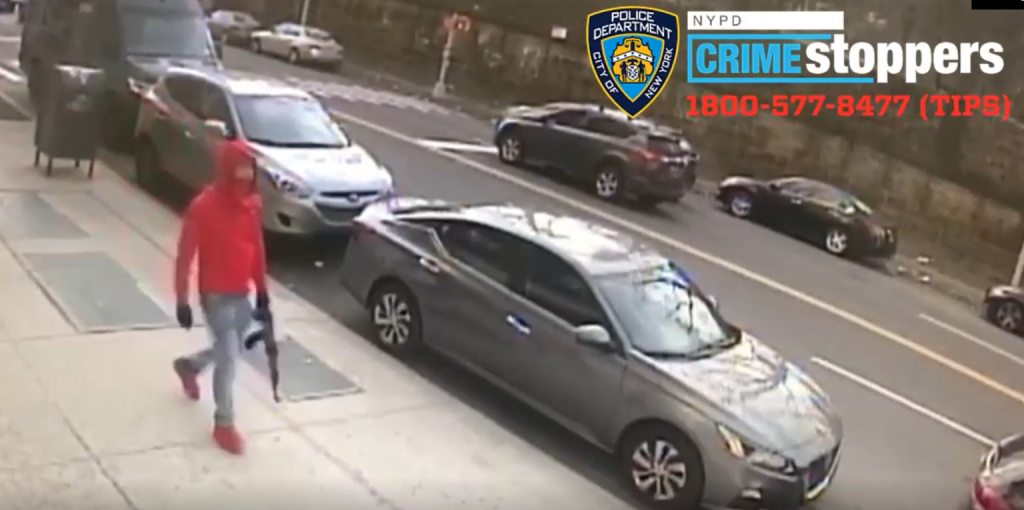
This was such a bizarre occurrence that immediately caught the medias attention, and was televised throughout the city. Reflecting on this image, no sane person would want to be around in an area where someone can walk around fully armed without being stopped, and highly televised situations like this pushes the definition of dangerous depending on the crime.
The Bronx was pushed so worldwide that in cities around the world, the name ‘The Bronx’ is now used as an insult. According to Denton Tarver, “Grim and featureless slums as far away as Catena, Sicily have been dubbed “The Bronx” by their local residents. For decades, the name of the once-promising borough of New York City has been synonymous with urban blight and drug-related street crime…”. People are so often told only one side of the story: the Bronx is a place of poverty and crime. The successes of the Bronx is not spoken about much. Did you know that the Bronx is the original home to the real Little Italy. How it is the place with the largest park in NYC; Pelham Bay Park, its scale size being more than 3x bigger than Central Park. How Haagen-Dazs ice cream originated in the Bronx (ImperialMovers).
Consistently listening to only one side of a story is creates biases, and Chimamanda Ngozi Adichie supports this. In 2009, TED Talk, a nonprofit organization that focuses on educating the public with speeches, had Chimamanda Ngozi Adichie, a well renowned Nigerian writer, speak about her personal experience with growing up with a single perspective of a story, and how misleading it can be.
The constant understanding of only one perspective conflicted with the wider point of view that she started to experience for herself. Most times, the single story creates a stereotype that often times are wrong and spun out of control.
The single story creates stereotypes, and the problem with stereotypes is not that they are untrue, but that they are incomplete. They make one story become the only story.
Chimamanda Ngozi Adichie
Everyone believes that the Bronx is dangerous for its crime and homelessness because of the media exploiting on it, and because of this, people has this preconception that the residents of the Bronx themselves must be dangerous due to being “ghetto”.
Crime does not make the Bronx dangerous. What makes the Bronx truly dangerous is the passion for life that the residents have, the passion for change and the voice that was forced to come out from them from a very young age.
How did the Bronx get its name?
In 1639, Jonas Bronck, was the first European settler to purchase 500 acres of land from the Native Americans on the east side of the now Harlem River to East 150th street. This area used to be known as “The End Place” or Ranaqua as it was placed towards the end of an old trail. His plan for the area was to build a tobacco business on the land, which he later succeeded in doing. When he died in 1643, the conflict between the Dutch settlers and the Native Americans of the area was beginning to intensify. From this point on, the remaining tobacco farmers began to abandon their fields, frustrated with the constant threat of Native American attacks. Although this was the end of his tobacco business, the land kept the name “The Bronck’s Land”, and “The Bronck’s River”, and as settlers moved in and oriented themselves into the land, and in 1898, the borough officially became the Bronx.
The Wonder Borough
Today, the Bronx is home to several well known factors: Yankee Stadium, the Bronx Zoo, and the New York Botanical Garden, but it began with nothing but grass fields before the 1900s. The subway started to expand into the Bronx, changing the demographic and the understanding of what it means to live in the city. Within a matter of 30 years, it transformed from an agricultural space to a spacious urban dwelling. New Yorkers soon started migrating towards the Bronx as the overcrowding in Manhattan became too much. The Bronx became a place where there was much more spacious living for significantly lower rent than any other borough in the city. According to The Bronx, a book written by Evelyn Gonzalez highlighting ways the Bronx has risen and fallen, explains how populations of several different cultures started to overwhelmingly move into the Bronx, “The South Bronx, in particular, went from being two-thirds white in 1950 to two-thirds African American and Hispanic by 1960. Forty years later, by 2000, the entire borough was almost all of black and Spanish-speaking ancestry”. Due to the huge growth in the population and the huge growth in the city in general, the Bronx started to be known as the Wonder Borough, “Between 1880 and 1930, it was one of the fastest growing urban areas in the world. Its civic and political leaders boosted the Bronx as the ‘banner home ward of the city’ and the ‘Wonder borough’…The Bronx became famous for its stable ethnic neighborhoods and housing units that on average were better than those of Brooklyn and Manhattan.” (Gonzalez). The Bronx became an example to all cities around the world due to its diversity in people and lifestyles that allowed for everyone to live the way that was desired.
But as all good things come to an end, the stellar example the Bronx came to an end as population started to grow exponentially, yet, the city was left abandoned by the government.
In time, the Bronx continues to be an example, however, not an example of optimum city, but of a collapsed city.
Passion and Pain
Friedrich Nietzsche, a German philosopher in the late 1800s, coined in a phrase that most Americans seem to live on.
That which does not kill us, makes us stronger.
Friedrich NietzschE
This maxim is often used to highlight the idea that suffering and pain is inevitable to life and one grows tougher from these experiences as we continue to learn and grow from them. Danger is what builds character as one must overcome subjectively dangerous situations and learn from them.
Webster dictionary defines dangerous as “involving possible injury, harm, pain, or loss”. This definition is pushed unto the Bronx as it is a place of staggering poverty. Overcrowding has become a prevalent issue in the Bronx, contributing to a way of life that is inadequate. According to the the Office of the New York State Comptroller, “Although the Bronx is the third most densely populated county in the nation, one-fourth of its 42 square miles is dedicated to parks and green space”. Carrying up to 1.4 million people in such small square footing limits the amount of resources that can be reached to every individual. Poverty levels are the highest among this city as resources are now being distrubted in a highly condensed areas.
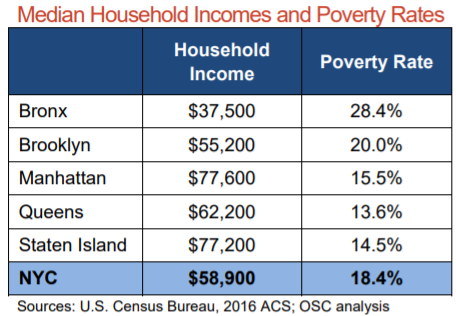
The Bronx has a household poverty rate that reached 28.4% in 2016, as the average income that household members earn is $37,500. This is significantly higher than any other borough and surpasses the city’s poverty rate. The lack of income and living in a densely populated area paves the way for poverty and crime, it pushes people to adapt to create the illusion of living adequately. Despite living in systemic challenges, the residents continue to live and fight to make a home in the borough.
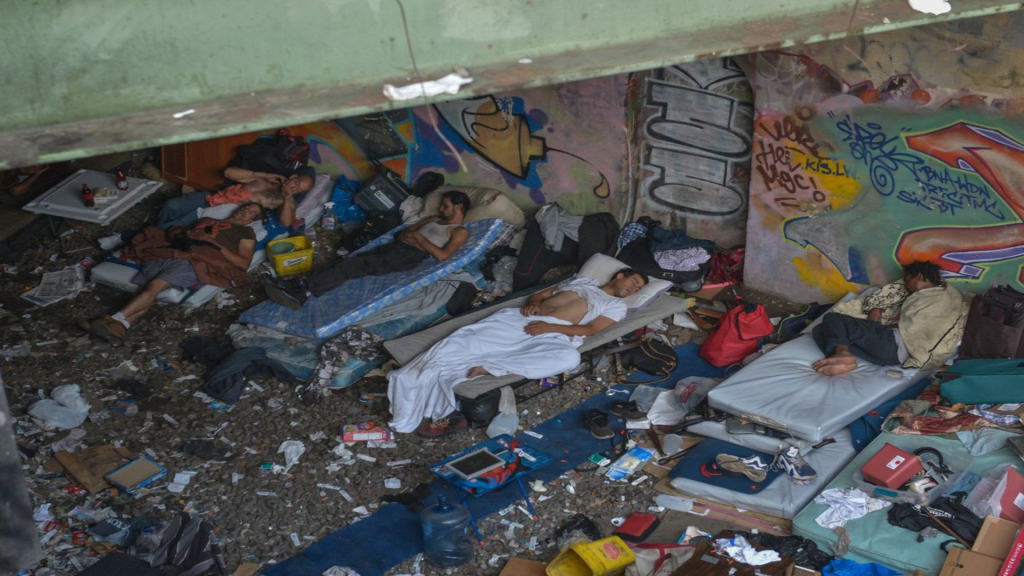
Perspective on a way of life ranges significantly from person to person depending on the situations that one has lived in. To these group of people, this place littered with trash and graffiti is a place of comfort and solace as they are not alone. They are sleeping with people who are going through similar situations and therefore are all fighting the same battles; a battle for a stable life. Each individual in the photo has a dream of change, and that dream is what continues to motivate them to live, despite living in a place that no human or animal should be allowed to.
This hints to the true definition of how dangerous should be interpreted for the Bronx: the Bronx is not dangerous because of the crime, but it is due to the passion that is built within as residents experience injustice from an early age.
The Danger is in the Fight
Being left abandoned, the residents had to continue making a living for themselves and to get the ideal needs, voices are raised. Time and time again, government show aspirations of wiping the Bronx clean and giving it a “new beginning”, instead of improving conditions that was established there in the first place.
In 2017, Rafael Salamanca Jr., the Council member for the 17th District of the New York City Council, released plans to revamp the South Bronx. Buildings was going to be destroyed to make room for newer, modern buildings, making room for wealthier people to live. Poor and working class areas was going to be completely replaced, putting in 71% of Bronx households in danger of displacement, according to Ashoka Jegroo. This rightly angered the residents as prior to this, low income families was being pushed away from the neighborhood as rent continued to increase and income was not coming fast enough. Instead of helping the poor by giving better job opportunities and raising the overall state of poverty within the borough, loyal residents are completely ignored and are instead they were going to be wiped away in order to create a wealthy city complex.
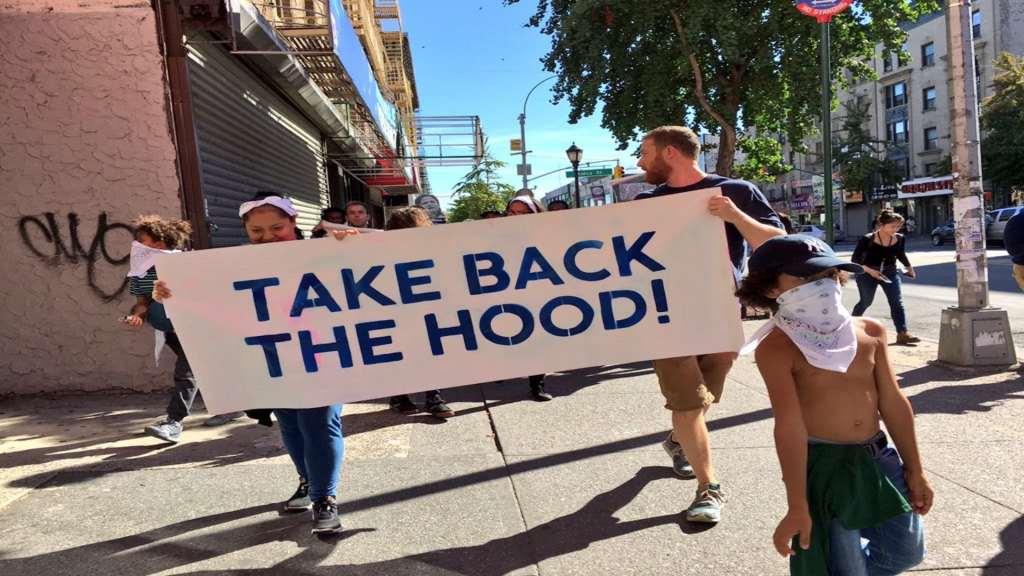
In response to this, people of all ages marched down in a peaceful protest to the office of Salamanca in order to have their concerns heard from. From a young age, kids and adults of all ages are taught to use their voice in masses to illicit a change or voice a want that needs to be heard from. They are exposed to the injustice of the world, learning to overcome that injustice and fight back, building up the warrior mindset from a young age. While other kids worry about toys and clothes, kids from the Bronx learn what it means to live feeling invisible.
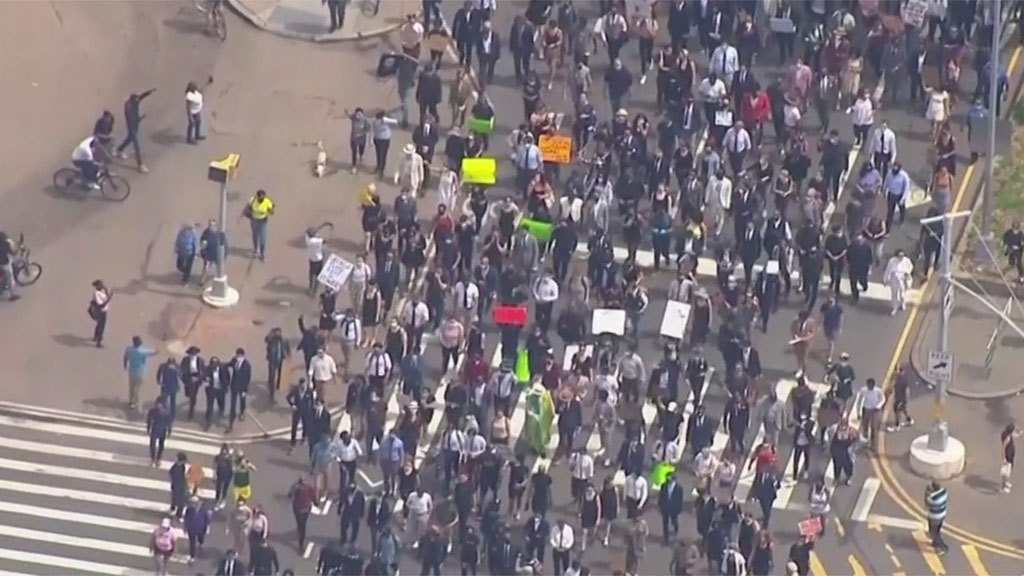
In light of recent events, the Bronx is home to several peaceful protests that has occurred in the case of police brutality. Living in a city with high levels of diversity, the well being of those living in these neighborhood become a threat as time and time again, police has been shown to be overly aggressive to minorities. On June 4, 2020, hundreds of protesters gathered on 3rd Avenue and 149th street to have a peaceful march towards Mott Haven asking for reforms in the police defense mechanisms and, once again, crying out for change in the systemic racism that is placed upon the borough. According to Human Rights Watch, the peaceful protest was a response long awaited within the neighborhood, as the Bronx “has long experienced the damaging consequences of systemic racism and the government’s overreliance on criminalization and policing to address societal problems”. Mott Haven itself “has long been aggressively overpoliced for low-level crimes, and more complaints about the use of physical force by police officers have been made in Mott Haven’s 40th precinct than in any of New York City’s other 76 precincts.”.
We are the peaceful protestors that our only goal is not to show our anger and conform to the stereotypes they want us to be, but to show them we are not animals, we are humans.
Livia Rose Johnson
Within the hour of the protest, raid officers would pursue mass arrests and violence to disperse the crowd from continuing with their march. People within this protest was badly beaten, arrested, and dehumanized as officers would zip-tie hands together, knockout bystanders, and cage people trying to leave as a way to disperse the crowd.
The Bronx is home to several protestors that continuously fights for the change that needs to be seen within the borough.
The Danger is in the Culture
Elitist would often discourage public transport as everyone is able to come to and from it, creating a home for infections to possibly carry out. Yet, in no other place will you see public transport being transformed from a dirty area to a stage with amazing performances. The livelihood of people taking public transport is shown through ‘Showtime’, a cultural activity. Showtime is commonly known in the Bronx as performances happening within the train carts themselves with the intention making money or just showing off some talent that can’t otherwise be shown. The name stems from the performers starting their act by repeating the phrase “Showtime!” before starting their performances. Upon screaming this, people standing around the center pole of the train car would disperse and move away to allow room for the performer.
After the original performer does what they want to do, other commuters tend to join in on the fun and move around freely. No matter what is being done, there is unconditional support throughout the whole act. The most common type of ‘Showtime’ is when someone starts to play music and dancing begins. However, performances varies from pole dancing to poem readings, and one cannot help but smile at the passion of the people doing these performances. ‘Showtime’ is very prevalent throughout the Bronx and is a prime example of passion in their own life being shown off to a place where you are less likely to see it.
The diversity in performances ties to the diversity of the Bronx. Walking down 3rd Avenue you are bombarded with several different accents and food that is taken for granted. The energy of the Bronx is often overwhelming to those who walk in, according to Peter Santenello. Peter, a youtuber, had researched the most dangerous neighborhoods in NYC by homicides and this led him to walk down the South Bronx. The video highlights what it is like walking across the South Bronx, showing the bad and the good of the many different people that lives within the area.
So, what is dangerous in the Bronx?
Passion.
Passion is what makes the Bronx dangerous. The passion is dangerous because it shows how despite all of the challenges placed on the residents, the spirit in their lives will never die out. Residents have lived through abandonment, prejudice, violence and poverty and continue to rely on themselves and each other to make the Bronx a home for themselves. From merchants selling mangos on the street to Showtime, the community in the Bronx is unmatched.
Crime does not define the Bronx. Love does.
References
“11 Things You Didn’t Know About the Bronx – Imperial Movers Bronx NYC.” Imperial Moving & Storage, www.imperialmovers.com/bronx-unique-facts/.
“’All We Want Is Change And Our People To Stop Dying’: Thousands March Through NYC For Eighth Day Of Protests Against Police Brutality.” Human Rights Watch, CBS New York, 4 June 2020, newyork.cbslocal.com/2020/06/04/protests-nyc-june-4/.
Ashoka Jegroo September 23, 2017, et al. “Bronx Residents Lead Anti-Gentrification March to Oppose Rezoning Plans.” Waging Nonviolence, 22 Feb. 2019, wagingnonviolence.org/2017/09/bronx-anti-gentrification-march-rezoning/.
Davenport, Emily. Video Shows Man Walking down Bronx Street with Assault Rifle. 15 Jan. 2021, www.amny.com/news/man-spotted-walking-down-bronx-street-with-assault-rifle-nypd/.
DeVillo, S.P. “How the Bronx Got Its Name.” Bronxriver.org, 2008, bronxriver.org/?pg=content&p=abouttheriver&m1=13&m2=78&m3=56.
DiNapoli, Thomas P. “An Economic Snapshot of the Bronx.” Office Of The New York State Comptroller, https://www.osc.state.ny.us/files/reports/osdc/pdf/report-4-2019.pdf
Gonzalez, Evelyn. The Bronx. Columbia University Press, 2004.
“Home.” UrbanAreasnet, urbanareas.net/info/resources/the-history-of-the-bronx-ny/the-history-of-the-south-bronx-ny/.
“ONE OF THE BEST TRAIN SHOWS ‘SHOW TIME.’” ONE OF THE BEST TRAIN SHOWS ” SHOW TIME”, YouTube, 21 Dec. 2016, www.youtube.com/watch?v=ZPy4jHEz8f4.
Santenello, Peter, director. Inside New York City’s MOST DANGEROUS HOOD – South Bronx 🇺🇸. YouTube, YouTube, 14 Oct. 2020, www.youtube.com/watch?v=R_rgKg8Cwco.
Shpancer, Noam. “What Doesn’t Kill You Makes You Weaker.” Psychology Today, Sussex Publishers, 21 Aug. 2010, www.psychologytoday.com/us/blog/insight-therapy/201008/what-doesnt-kill-you-makes-you-weaker#:~:text=Friedrich%20Nietzsche%2C%20the%20German%20philosopher,to%20resonate%20within%20American%20culture.
Tarver, Denton. “A Quick History of the Iconic Borough – The New Bronx.” CooperatorNews New York, The Co-Op & Condo Monthly, Apr. 2007, cooperatornews.com/article/the-new-bronx/full#cut.
“‘Kettling’ Protesters in the Bronx.” Human Rights Watch, 12 Nov. 2020, https://www.hrw.org/report/2020/09/30/kettling-protesters-bronx/systemic-police-brutality-and-its-costs-united-states.